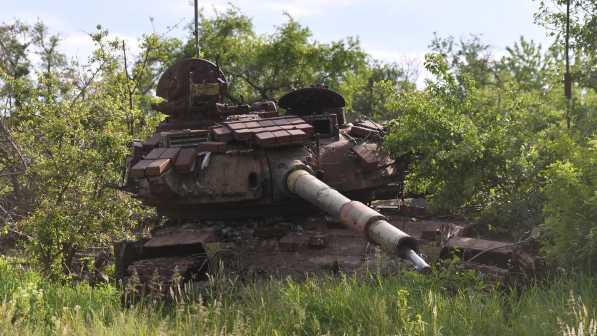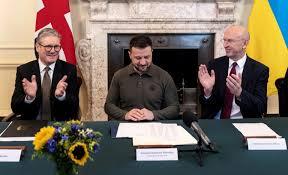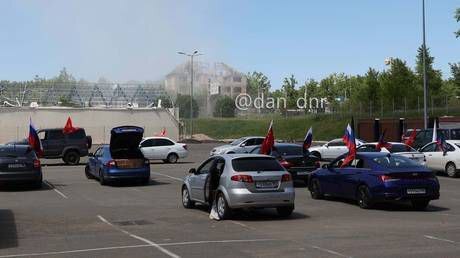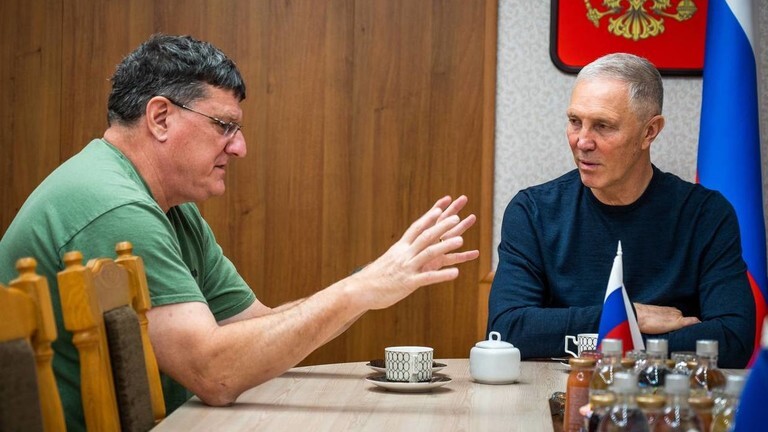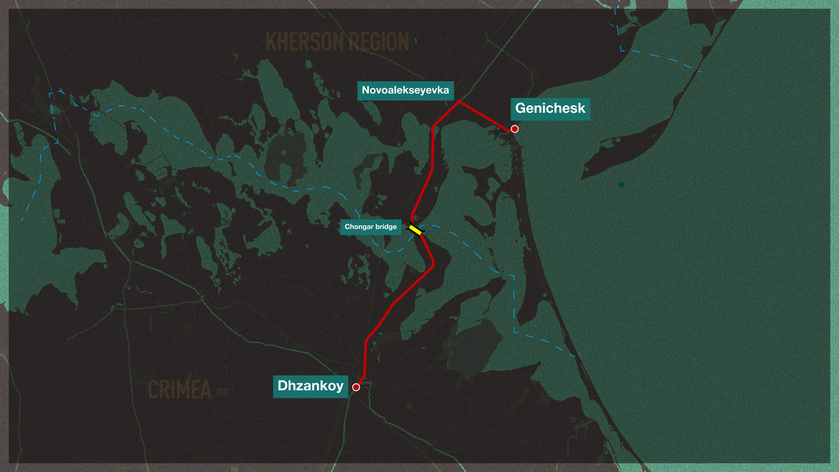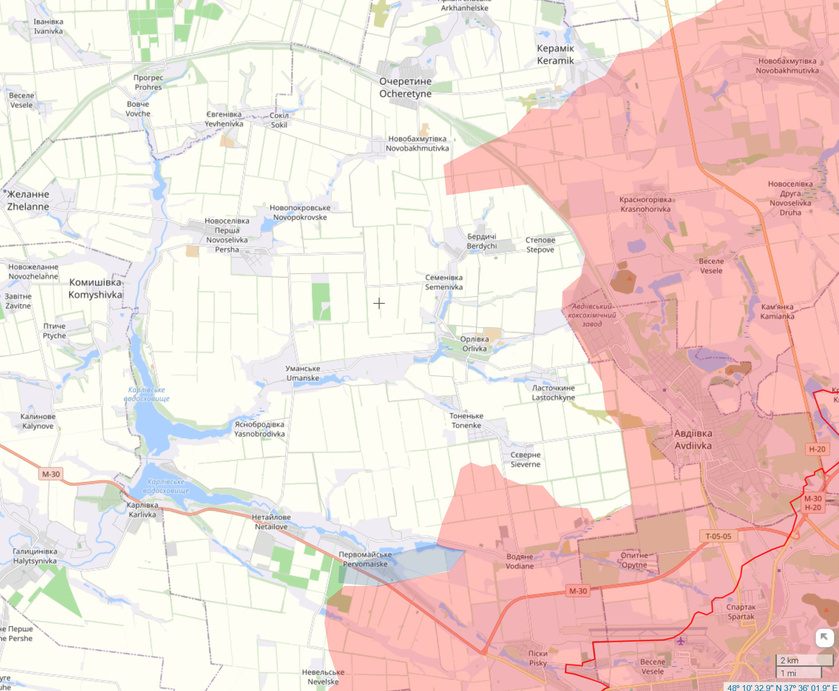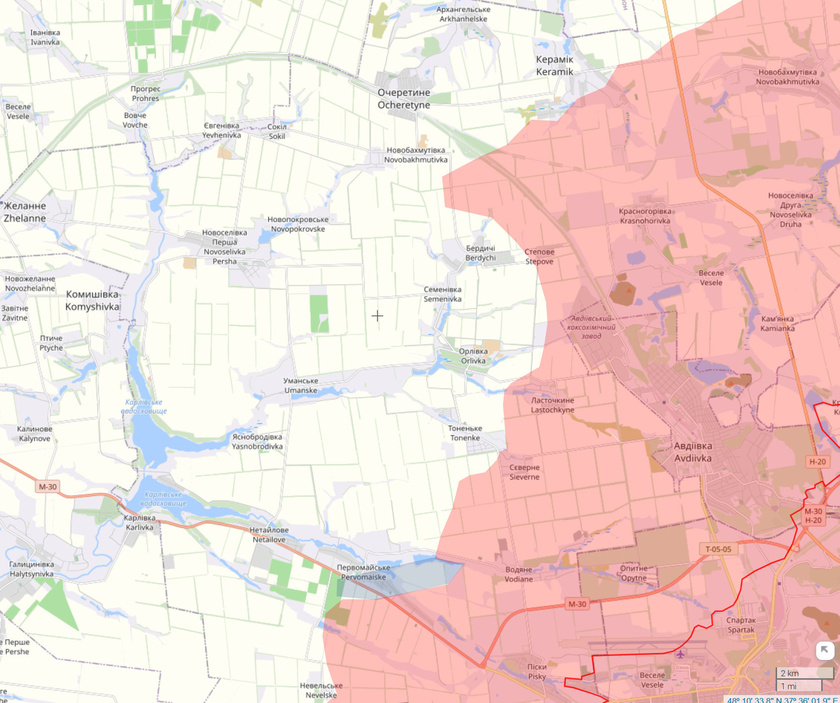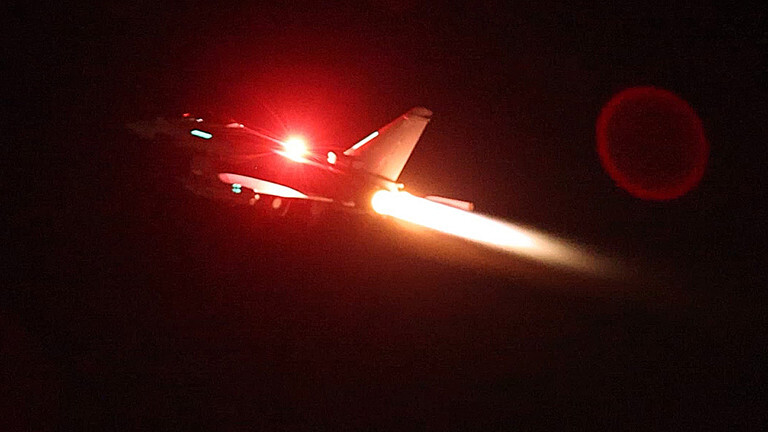Most of the troops that comprised this new army had little or no prior military experience. They received approximately three weeks of training on military fundamentals, before being trained on the operation (and maintenance) of the new NATO weapons they would be using.
Then they spent a few weeks carrying out field exercises designed to simulate an attack on the Russian defenses using complex “combined arms”
tactics taught by NATO and American instructors. After this, they were shipped back to Ukraine and sent on the road to Rabotino.
The reduction of a prepared defensive line is one of the most complicated tasks one can assign a military unit in combat. To successfully execute this mission, the assault forces need to be masters of their craft, operating as part of a combined arms team capable of suppressing enemy forces, and breaching minefields while maneuvering under fire.
This is a task that experienced units with years of training under their belts would have difficulty pulling off. For an army like Ukraine’s third-generation force, this was a mission impossible, something every NATO trainer involved in preparing the Ukrainian forces would have known.
The massacre that occurred along the road to Rabotino was unavoidable so long as Ukraine and their NATO masters believe that the conflict with Russia can be resolved through force of arms. The problem is that the disparity between the quality and quantity of forces deployed by Ukraine and their western supporters on the one side, and Russia on the other, is too wide to be bridged by any combination of training and equipment NATO might be able to provide.
There is no magic weapon available to the West that can change the reality on the battlefield in and around Rabotino. Neither F-16’s and/or
ATACMS can alter this reality. Nor is there a magic wand that can be waved over the battlefield to change the qualitative issues regarding the Ukrainian soldiers, who arrive on one of the most technologically advanced—and lethal—battlefields in modern history with little or no training.
The Ukrainian generals responsible for giving the orders to the Ukrainian Army, and the NATO trainers who prepared them for battle, knew that the outcome that is transpiring along the road to Rabotino was inevitable.
The harsh fact is that tens of thousands of Ukrainian soldiers and billions of dollars of western military equipment have been sacrificed not for viable military purposes, of which there are none, but rather to assuage the political needs of Ukraine’s leaders, who needed to be seen as being willing to make use of the training and material support provided, and their US and NATO masters, who needed to be able to point to battlefield successes in Ukraine to justify the diversion of their respective national treasury and military arsenal to the Ukrainian cause.
The road to Rabotino is paved with the detritus of western hubris, manifested in the
flesh and blood of the Ukrainian Army scattered amongst the destroyed material produced by the defense industries of the collective West. This battle had only one possible ending, which has come to pass.
But the real tragedy is that neither Ukraine nor the collective West have absorbed the lessons that they were taught by the Russian Army—that the conflict in Ukraine can only end in a Russian victory. Sadly, many thousands of more Ukrainian soldiers, and tens of billions of dollars more of western military equipment, will need to be sacrificed before this lesson is finally driven home.
